Review: DJI Mavic 2 Pro Drone
Drone photographer Justin Moore reviews the DJI Mavic 2 Pro
• July 2019 issue
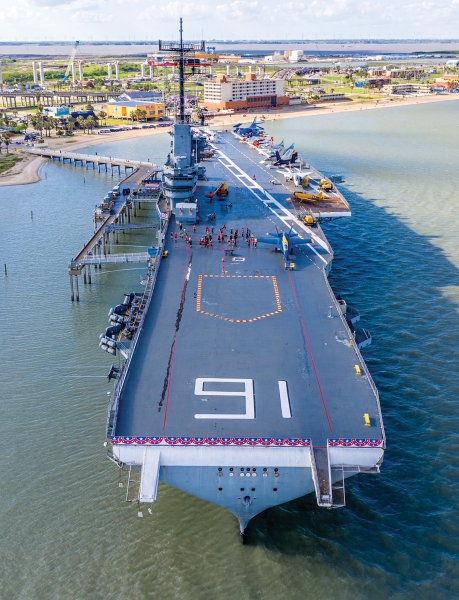
The 20-megapixel sensor on the Mavic 2 Pro gives aerial photographers more creative cropping options, including vertical crops like this photo of the USS Lexington anchored at Corpus Christi, Texas.
Go anywhere, no compromise
A 20-megapixel Hasselblad camera in a foldable drone with 360-degree collision avoidance—too good to be true? Welcome to the DJI Mavic 2 Pro, the latest incarnation of DJI’s wildly popular Mavic series.
A couple of years ago, DJI acquired a majority stake in Hasselblad as part of its strategy to be both a drone maker and a serious camera manufacturer. The Mavic 2 Pro debuted in August 2018 and immediately created buzz as the first DJI drone to sport a Hasselblad camera. Does it live up to the hype?
CAMERA
The Mavic 2 Pro’s camera sports a 20-megapixel 1-inch CMOS sensor on an updated three-axis gimbal. Image quality is excellent, with the large sensor capturing a wider range of tones. The immediate question that came to mind was whether this new camera would outperform the camera on the Phantom 4 Pro, which has similar specs but is no longer in production. The short answer is not quite. In my experience and that of others I’ve spoken with, the edge-to-edge sharpness of the Phantom 4 Pro’s camera outperforms the Mavic 2 Pro’s, and the Phantom’s 60fps 4K video capture gives it the edge.
That said, the Mavic 2 Pro’s images are still outstanding and a major improvement over the image quality of its predecessor, the Mavic Pro. In addition, Hasselblad’s Natural Color Solution consistently delivers pictures with rich color and overall great tonal range, which translates to less post-processing for the user.
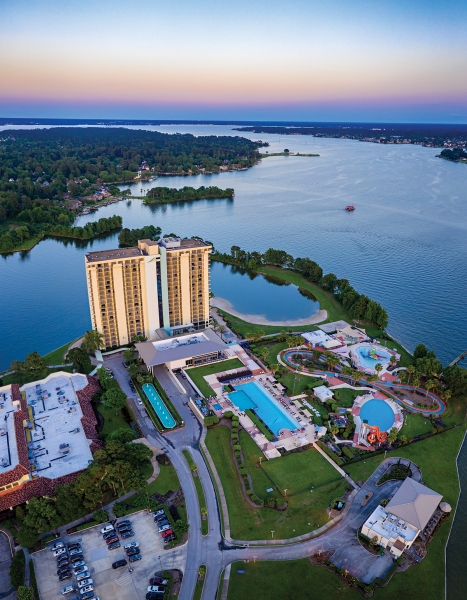
This is a vertical panoramic shot of the La Torretta Lake Resort & Spa off Lake Conroe northwest of Houston.
While the Mavic 2 Pro does not include a 60fps 4K video option, it does introduce a couple of video features designed to help make beautiful scenes from the air. First there is the 10-bit Dlog-M color profile, which DJI claims captures up to a billion colors with a higher range of tonality than standard 8-bit video profiles. If you want to get the very best video quality and are OK with spending more time color grading your footage, this is the best option to use. There’s also 4K 10-bit HDR support, which will play back beautiful high-definition video on TVs that support the HLG format.
The more impressive video feature of the Mavic 2 Pro is the inclusion of two 4K video shooting modes: a traditional full-frame 4K video mode (at the same 28mm focal length used to capture still photos) and a new 4K HQ mode. The former 4K video mode involves a process to downsample the full-frame video since the sensor is capturing more resolution (5,472x3,648 pixels) than 4K video supports (3,840x2,160 pixels).
The new 4K HQ mode uses the 8-megapixel center sweet spot of the sensor at the standard 4K resolution (3,840x2,160). This selective use of the larger 20-megapixel sensor results in an equivalent focal length of 39mm and an angle of view that looks noticeably closer to the subject. The longer focal length provides opportunities to record scenes with a cinematic feel.
Timelapse photographers will love the new Hyperlapse feature, which provides four capture modes, including options to circle subjects or follow waypoints during the timelapse capture phase. With a little planning, the results can be stunning.
Hyperlight is a night photography mode that uses advanced noise reduction to yield fully automatic night exposures with rich detail. This is a boon for aerial photographers who are less inclined to spend significant time post-processing night photos.
Finally, the Mavic 2 Pro’s camera features a variable aperture with a range of f/2.8 to f/11, which is especially helpful for keeping shutter speeds manageable when shooting video in bright conditions.
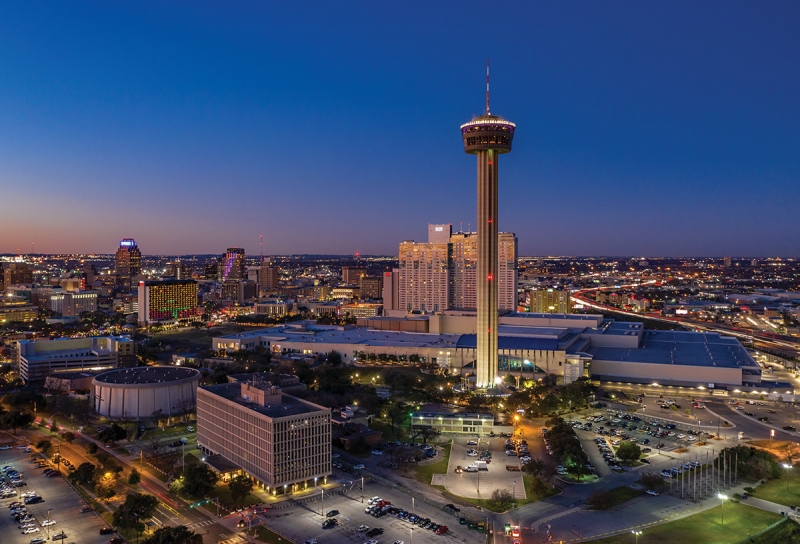
The Tower of Americas dominates downtown San Antonio at dusk. The Mavic 2 Pro has Hyperlight, a night photography mode that uses advanced noise reduction for fully automatic night photography.
FLIGHT
The Mavic 2 Pro introduces omnidirectional obstacle avoidance and a second generation of the popular OcuSync transmission system. Like earlier Mavics, OcuSync provides a robust communication channel between the drone and the remote controller with a reliable, high-resolution view that is rarely interrupted by interference.
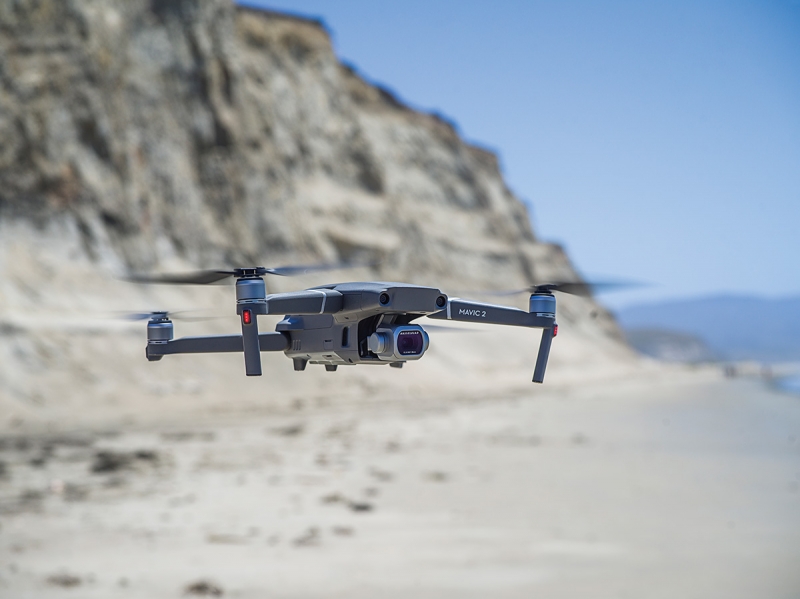
The popular Sport and Tripod flight modes are now easy to select directly from the controller to let you access the flying mode best suited for your operations. Sport disables collision avoidance features so you can fly the drone at max speeds; Tripod is a low-speed flight profile great for navigating through tight spots. Automated flight modes like Asteroid, ActiveTrack, and Boomerang allow even new drone flyers to get cinematic shots with relative ease.
At 2 pounds, the Mavic 2 Pro is heavier than its predecessor but gets about one more minute of flight time thanks to a slightly higher capacity battery. Thirty-one minutes is the stated flight duration, but prudent pilots who land with reserve power will find a usable flight duration of 20-25 minutes max.
The Mavic 2 Pro is a joy to fly. It’s fast, responsive (especially in Sport mode), and is noticeably quieter than previous DJI drones thanks to upgraded motors coupled with low-noise propellers.
BOTTOM LINE
With great image quality, a wide assortment of flight and photo capture modes, and a super portable design that folds down to the size of a water bottle, the Mavic 2 Pro appears well-poised to become another DJI best seller. The Mavic 2 Pro now owns the position of a take-anywhere drone that doesn’t force you to make compromises on image quality or capability. Priced at $1,499, it’s sure to make it into the hangars of many drone pilots.
Justin Moore is the author of “Drone Photography Basics: Your Guide to the Camera in the Sky” (Amherst Media).
Tags: drone photography drones

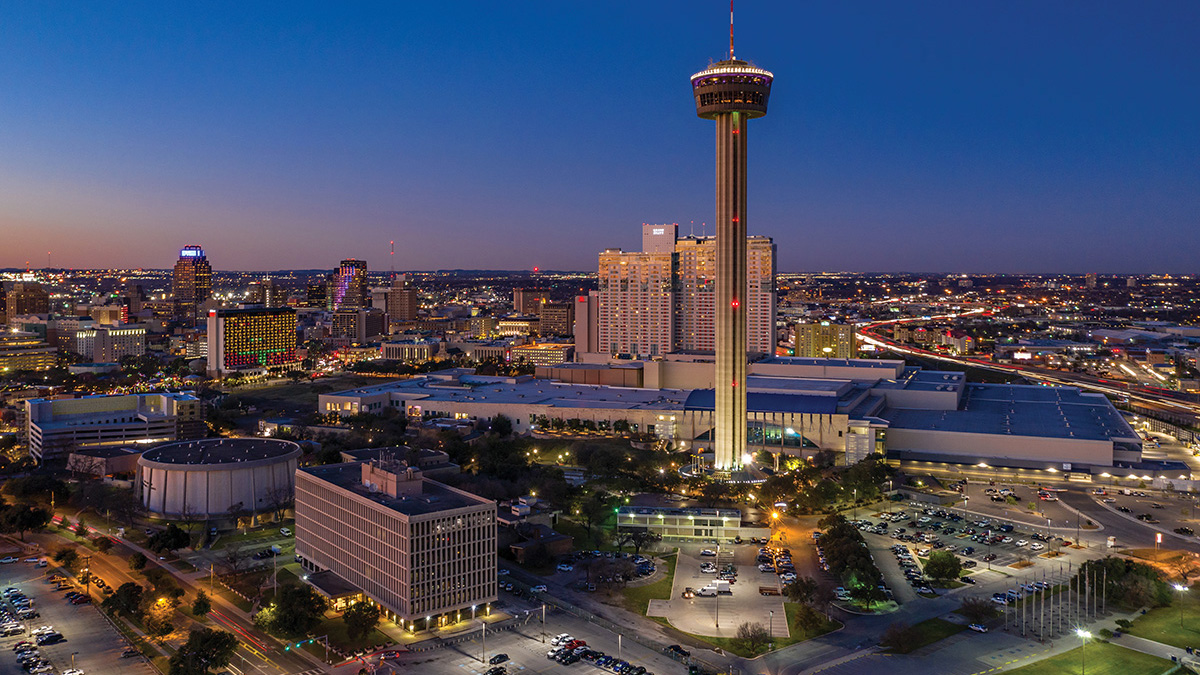
 View Gallery
View Gallery